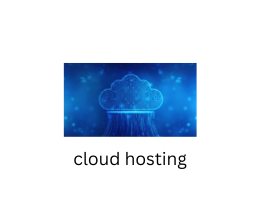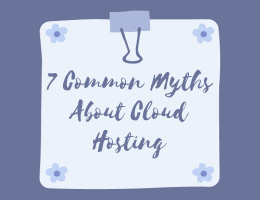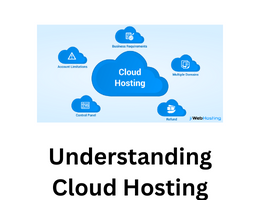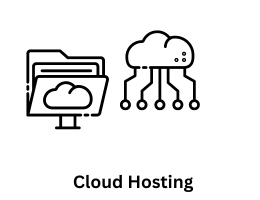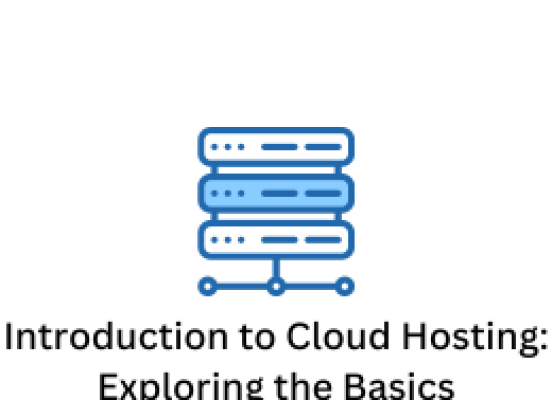
Introduction to Cloud Hosting: Exploring the Basics
- By admin --
- Friday, 09 Feb, 2024
Cloud hosting has become a cornerstone of modern computing infrastructure, revolutionizing the way businesses and individuals deploy, manage, and scale their online services. In this comprehensive guide, we'll delve into the basics of cloud hosting, exploring its fundamental concepts, benefits, and key components.
Understanding Cloud Hosting:
At its core, cloud hosting refers to the delivery of computing resources, such as servers, storage, databases, networking, and software applications, over the internet. Unlike traditional hosting methods that rely on physical servers located on-premises, cloud hosting utilizes a network of remote servers managed by third-party providers.
Key Components of Cloud Hosting:
-
Virtualization: Cloud hosting relies heavily on virtualization technology, which enables the creation of virtual instances of servers, operating systems, storage, and other resources. Virtualization allows for efficient resource utilization, flexibility, and scalability.
-
Infrastructure as a Service (IaaS): IaaS is a fundamental model of cloud computing where providers offer virtualized computing resources over the internet. Users can provision and manage servers, storage, and networking infrastructure on-demand, paying only for the resources they consume.
-
Platform as a Service (PaaS): PaaS provides a platform allowing customers to develop, run, and manage applications without the complexity of building and maintaining the underlying infrastructure. PaaS offerings typically include development tools, middleware, database management systems, and runtime environments.
-
Software as a Service (SaaS): SaaS delivers software applications over the internet on a subscription basis. Users access these applications through a web browser or API without needing to install or manage the software locally. Popular examples of SaaS include email services, CRM systems, and productivity suites.
Benefits of Cloud Hosting:
-
Scalability: Cloud hosting offers unparalleled scalability, allowing users to easily scale resources up or down based on demand. This agility enables businesses to accommodate fluctuating workloads, handle traffic spikes, and optimize resource utilization.
-
Flexibility: With cloud hosting, users have the flexibility to choose from a variety of computing resources and configurations based on their specific requirements. This flexibility empowers organizations to tailor their infrastructure to meet the unique needs of their applications and workloads.
-
Cost-Efficiency: Cloud hosting follows a pay-as-you-go pricing model, where users only pay for the resources they consume. This eliminates the need for large upfront investments in hardware and allows businesses to optimize their IT spending by scaling resources dynamically.
-
Reliability and Redundancy: Cloud hosting providers typically operate multiple data centers across geographically diverse locations, offering built-in redundancy and high availability. This redundancy ensures that services remain accessible even in the event of hardware failures or network outages.
-
Security: Leading cloud hosting providers invest heavily in security measures to protect customer data and infrastructure. These measures include encryption, access controls, network firewalls, intrusion detection systems, and regular security audits.
Considerations for Cloud Hosting:
While cloud hosting offers numerous benefits, it's essential for organizations to consider several factors when adopting cloud solutions:
-
Data Privacy and Compliance: Organizations must ensure that their cloud hosting provider complies with relevant data privacy regulations, such as GDPR or HIPAA, especially when handling sensitive or regulated data.
-
Vendor Lock-In: Switching between cloud hosting providers can be complex and costly due to differences in infrastructure, APIs, and services. It's crucial to evaluate the long-term implications of vendor lock-in when selecting a cloud provider.
-
Performance and Latency: Factors such as network latency, geographic location, and resource contention can impact the performance of cloud-hosted applications. Organizations should assess performance requirements and choose cloud regions strategically to minimize latency.
-
Data Transfer Costs: Cloud hosting providers typically charge for data transfer between regions, availability zones, and the internet. Organizations should optimize data transfer patterns and minimize unnecessary egress traffic to control costs.
Conclusion:
Cloud hosting represents a paradigm shift in the way computing infrastructure is provisioned, managed, and scaled. By leveraging virtualization, on-demand resources, and a pay-as-you-go pricing model, cloud hosting offers unmatched scalability, flexibility, and cost-efficiency for businesses of all sizes. However, organizations must carefully consider factors such as security, compliance, vendor lock-in, and performance when adopting cloud solutions. With proper planning and implementation, cloud hosting can empower businesses to innovate, accelerate growth, and stay competitive in today's digital landscape.

